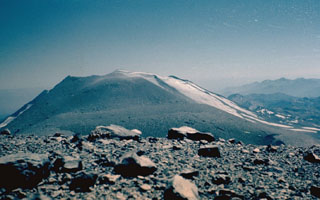Report on Nevados de Chillan (Chile) — 21 January-27 January 2009
Smithsonian Institution / US Geological Survey
Weekly Volcanic Activity Report, 21 January-27 January 2009
Managing Editor: Sally Sennert.
Please cite this report as:
Global Volcanism Program, 2009. Report on Nevados de Chillan (Chile) (Sennert, S, ed.). Weekly Volcanic Activity Report, 21 January-27 January 2009. Smithsonian Institution and US Geological Survey.
Nevados de Chillan
Chile
36.868°S, 71.378°W; summit elev. 3180 m
All times are local (unless otherwise noted)
Based on a SIGMET and analysis of satellite imagery, the Buenos Aires VAAC reported that during 21-22 January ash plumes from Nevados de Chillán rose to altitudes of 3.7-6.1 km (12,000-20,000 ft) a.s.l. and drifted 50-80 km SE. The VAAC also reported that an ash plume from Callaqui, a nearby volcano 120 km S, drifted NE on 22 January.
Geological Summary. The compound volcano of Nevados de Chillán is one of the most active of the Central Andes. Three late-Pleistocene to Holocene stratovolcanoes were constructed along a NNW-SSE line within three nested Pleistocene calderas, which produced ignimbrite sheets extending more than 100 km into the Central Depression of Chile. The dominantly andesitic Cerro Blanco (Volcán Nevado) stratovolcano is located at the NW end of the massif. Volcán Viejo (Volcán Chillán), which was the main active vent during the 17th-19th centuries, occupies the SE end. The Volcán Nuevo lava-dome complex formed during 1906-1945 on the NW flank of Viejo. The Volcán Arrau dome complex was then constructed on the SE side of Volcán Nuevo between 1973 and 1986, and eventually exceeded its height. Smaller domes or cones are present in the 5-km valley between the two major edifices.

